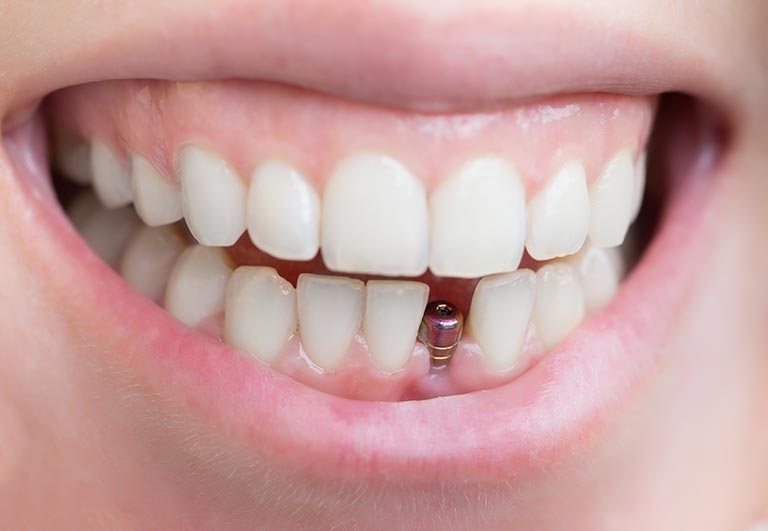Dental implants should be firmly anchored in place. That’s not always the case, though. When a dental implant becomes loose, it’s important to see a dentist right away so that the implant doesn’t fall out or cause other complications that could be life-threatening. That’s why it’s important to get advice whenever there’s a problem.
There are many interesting and amazing tips and suggetions about health that you may not know. for example health screening Whether you’re interested in health, food sources, or natural history, you’ll find the information you need on About Health.
You’ll discover a comprehensive guide on loose dental implants crowns and what to do if you notice any movement in the samples below. Find out what causes it, how it’s diagnosed, and what can be done to help.
What Is Dental Implant?
Dental implants are among the most long-lasting solutions for replacing a missing tooth.
A dental implant consists of three pieces: the titanium post that is surgically implanted into the jawbone, the abutment that anchors the crown, and the artificial tooth that will replace the natural tooth above the gum line.
Due to its position within the bone, dental implants rarely experience failure. However, gum disease might cause problems. After being hit, the abutment is more likely to crack or become loose. However, the crown of the implant can become damaged or come free.
The crown takes the brunt of the abuse from chewing and food debris. All of the crown materials are fragile, but the dental implants crowns are made of various materials with differing strengths. When a crown comes loose, it must be fixed right away.
Loose Dental Implant Symptoms
The patient can usually tell when a piece of the prosthesis is loose. You might be able to detect an issue just by touching it with your tongue or fingers. If you want to avoid more dental problems, you should see a dentist immediately.
Loss of dental implant stability can be indicated by:
- synthetic tooth in motion,
- discomfort, particularly when attempting to chew,
- instantly shedding blood,
- affected area discoloration, and
- The crown coming off the tooth.
When patients experience this condition and go to the dentist, an X-ray is typically the first course of action. The clinical examination will next determine which component is shifting, as it may not be the implant itself.
Most of the time, a crown or abutment is what comes loose. This is encouraging since it may mean that the entire implant fixture does not need to be extracted from the bone. Any freedom of movement caused by an implant is undesirable, however, and must be addressed without delay
It can be more challenging to diagnose and treat a problem when a single implant is used to anchor many dental implants crowns or even a full denture.
Reasons for a Loose Dental Implant
Problems might surface at any time after implantation, from the first stages to the healing phase and even years later. There are a variety of possible causes for either type of problem.
| Early | Late |
| Surgical trauma | Lack of osseointegration |
| Overheating during the procedure | Infection |
| Non-ideal placement | Biomechanical overload |
| Complicated wound healing | Faulty design of the implant or component |
| Insufficient stability | Gum disease |
| Initial overload |
There are many interesting and amazing details about animals that you may not have known. For example, lifespan of a ferret Whether you’re interested in animals as pets, food sources, or natural history, you’ll find the information you need on About Animals.
The problem is solved differently depending on what exactly is affected. Dental implants crowns, abutments, and implants all fall under this category. Any of these components coming loose and untreated increases the risk of implant failure and other systemic problems.
Treatment
Loose dental implant crowns are treated in the same way as those with damaged abutments. If anything can be, it is unscrewed. If not, you can have the crown removed if the cement is soft enough. If not, it will be divided into smaller pieces. The rod or abutment is then scrubbed clean.
Complete loss of a dental implant crown that is otherwise healthy allows for its reattachment with dental cement. Given the ease of the surgery, anesthesia might not even be necessary.
If the crown is broken, the problem becomes more complicated. The dentist can either build a new cast or try to track down the old one. You’ll probably have to make do with a short-term option for a couple of months.
There is a risk of a loose crown or abutment if a crown is screw-retained. Simply retightening the screws should solve the problem.
How To Avoid Dental Implant Complications
Ceasing your habit of biting or chewing on hard objects or meals is highly recommended. Neither ice nor bottles should be opened with teeth. Dental implants crowns can be damaged by even harmless habits like nail chewing.
The success of the implant depends heavily on the condition of your gums. If you want to avoid periodontitis, you need to be diligent about practicing good oral hygiene. You must maintain good oral hygiene by regularly brushing, flossing, and using mouthwash.
If you find that you grind your teeth at night, it is recommended that you get a mouthguard. Playing a sport will also prove beneficial. Remember that even games with minimal impact, such as tennis, can harm your teeth. A tooth can be knocked out by anything that hits your face hard enough.
References:
1: Diabetes and gum disease: The diabolic duo
Publishing date: 13 October 2014
https://doi.org/10.1016/j.dsx.2014.09.022
2: Influence of powder/liquid mixing ratio on the performance of a restorative glass-ionomer dental cement
Publishing date: 4 June 2003
https://doi.org/10.1016/S0142-9612(03)00301-6
3: Oral Hygiene Measures and Promotion: Review and Considerations
Publishing date:12 March 2008
